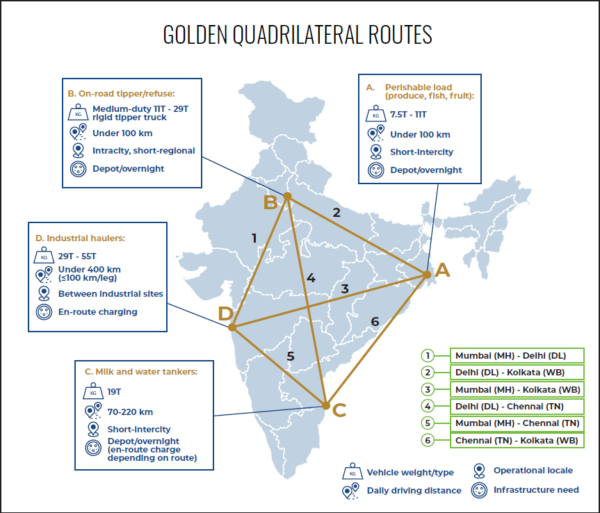India has reached a critical juncture and must decide how quickly to ramp up decarbonization, grow its zero-emission (ZE) transportation industry, and become a driving force in the global green economy—continuing its dependence on diesel fuel and internal combustion engines, and thereby furthering catastrophic health and climate consequences, is no longer a viable option. It’s time for decision makers to choose the clear path forward to realize India’s 2070 goal of carbon neutrality by:
- Developing clear, decisive ZE policies with strategic timelines, incentives, and phase-in plans.
- Deploying initial vehicles in areas primed for electrification, known as first-success segments.
- Collaborating across integrated partnerships to create a ZE transport roadmap.
India’s Golden Quadrilateral
Establishing a dedicated ZE corridor connecting first-success segments is vital to achieve long-term decarbonization goals. The Golden Quadrilateral and the two diagonal highway networks connecting Delhi, Mumbai, Chennai, and Kolkata account for 50% of India’s goods traffic. About half of the goods in these corridors are transported by road. Freight vehicles traveling these routes emit various pollutants that harm human health and contribute to smog formation: nitrogen oxides, particulate matter, sulfur dioxide, and volatile organic compounds. Corridors like the Golden Quadrilateral that support high freight volumes are viewed as “no-regrets” locations for infrastructure investments, as they ensure high utilization of deployed charging equipment and are well positioned for strong public-private partnerships for development.

